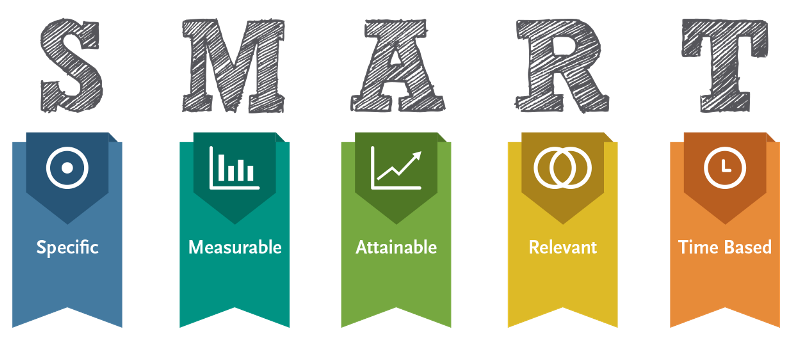In this Article:
Try Kanbanchi now
Start your free trial

Project management is hard enough without the added complications of not being able to communicate in-person or at crucial times. But for many companies, remote project management is a reality that isn’t going away anytime soon. The hap-hazard remote environment set up this year is beginning to settle into a long-term strategy, and with these new technologies, information, and training, are needed. Luckily, the digital world is well set up to accommodate such a transition. In this article, we look at five ways to make the process easier.
About the author: Darya Jandossova Troncoso is the Content Manager at Kdan Mobile. She is passionate about writing, travelling and art. Darya is also an editor of two digital marketing blogs – MarketSplash and MarketTap, where she shares her insights with other like-minded readers and marketing enthusiasts.
Remote project management is vital to the success of virtual projects and increasingly necessary in today’s world of remote digital infrastructure. The success of offline projects can also be influenced by the quality of remote project management since some digital interaction is typically needed at some point. Project management tools vary in their priorities and applications; some prioritize scheduling while others focus more on communication. Understanding the needs of your business or project and utilizing the appropriate software can make a massive difference to the success of any given undertaking.
You will only require PMS if you are working on a full project that needs a team to complete. If you have a definite start date and deadline and your project incorporates a small to medium-sized team, then it’s worth considering PMS as a useful tool to successfully meeting your deadline. There are many PMS tools to choose from, and you must implement the right one. Firstly, consider the nature of the project, does it require efficient scheduling, all-access communications channels, file sharing, signing document online and taking care of the data security, chat and messaging facilities, or data management?
Regardless of which software you choose, there are certain things to look out for across the board; you want to avoid implementing an inferior software solution that costs you revenue and reputation. Opt for one that is comprehensive, meaning it includes a basic integration of shared networking tools and communication channels. After this, the price you pay will depend on which software attributes you want to prioritize.
Getting the right software management solution for your team is essential, it can make all the difference to the success of a project; that said, the software is only as good as people who are using it, which is why it’s so important to get the right people on a team as well. Optimizing your team for a project is the smart way to get the best results; again consider the needs of the project, will you need someone with negotiation skills, strong writing skills, or an ability to meet tight deadlines? Perhaps you need creativity on the project or someone with excellent motivational skills. The team you build will create a lasting bond that can be utilized again in the future on similar projects.
Working remotely has its challenges. The lack of face-to-face communication means that the social bonding we take for granted in the office lacks, and digital communication can sometimes feel remote in more ways than one. However, there are still opportunities in remote teams to bond and create a collaborative and productive team spirit.
Getting the right project management interface is top of the list; with everyday communication at a premium, it’s important to have those channels open as much as possible. Software with messaging solutions and always-on video chat are perfect for collaborating teams. If your team has the most effective tools at its disposal, it is less likely to become annoyed or frustrated, and more likely to operate effectively. Also, consider team building activities, a common room for coffee breaks, or multi-player gaming. Setting up automated email marketing or automating other parts of your business is a surefire way to make things easier from the very beginning.

There are so many variables to consider when working in remote teams. Teams are working across time zones, and there are a variety of personalities and technologies to interface with. It means that the more consistency you can build into your collaborative projects, the easier and more effective they will be. Certain things must be crystal clear when operating remotely, and your goals are one of them.
This means your project goals and your company goals. Everyone must be on the same page and pulling in the same directions. Errors in a collaborative system can take some time to iron out, so it’s best if individuals know their responsibilities and how to operate independently and responsibly.
Goals can come in many forms; they can be broad company goals, such as achieving a higher quarterly growth rate, project goals, like reducing daily delivery times, or individual goals relating to professional development. The type of goals you set will be a combination of company needs and personal motivations. In your planning meeting, start with a broad scope. What do you want to achieve with the project based on the company’s overall business goals? You can then create attainable targets that tie in with the overall purpose of the business. Within this framework, you can then look at the individual personal and professional goals that team members may want to achieve throughout the life of the project.
Goals are only useful if they are attainable; with this, in mind, it’s important to track the progress of goals along the way to ensure they are on track. One effective way of doing this is to implement SMART goals in your teams. SMART stands for Specific, Measurable, Attainable, Relevant, and Time-bound. An example of a SMART goal is to increase the company’s market share by 10% by opening four new online stores in the next quarter. As you can see, this SMART goal is easy to track and monitor its success or failure. These goals can also be implemented at a personal and professional level to improve individual performances.
The recent COVID Crisis has forced many companies and organizations into remote working situations at short notice. The technological possibilities for doing so have been fortunate, but it has meant that many remote teams have been formed spontaneously, and perhaps without adequate training. Remote working can be precarious, to ensure its success, regular monitoring is recommended – to check everything is operating as it should. A lack of face-to-face supervision, lack of access to information, social isolation, and distractions from the home environment are just some of the inefficiencies that can affect your project goals. In the case of monitoring, a little often is the best practice.
Organize your remote team carefully by selecting individuals right for the project and ensuring an adequate infrastructure. The next step is to plan a regular meeting and individual check-in sessions to stay informed about the project and make sure that any issues are solved quickly. Stress the importance of meeting your project team, it’s important they understand the need for this collaborative effort to deal with inefficiencies as they come up. Team collaboration tools should be a big part of how your project is being handled and managed.
The consequences of not maintaining regular contact in the form of check-in sessions and meetings are potential problems on the project that are overlooked. Not to mention the important team-bonding that results from these get-togethers.
Organizing and effectively running a remote team can be a tricky balancing act. Chances are you will have a regular weekly meeting planned with the group to get updates on progress and issue instructions. These weekly meetings are crucial for maintaining continuity and ensuring everything is on-track. But there will be different personalities on the team, and some of them may not be as vocal as you would like. In this case, schedule individual one-to-ones, perhaps every week; this will create more harmony within the team and give you a better insight into its operation.

The way we learn and improve is through feedback and effective changes in behaviour and working habits. Concerning a company project, it’s necessary to ensure that individuals are in-line with the business goals. As a rule of thumb, it makes sense to assume that feedback will be mandatory and ongoing as you look to tailor the performance of your team and build a lasting and successful group.
But getting feedback right is all-important, and it can be a delicate conversation at times. Too much criticism can be demoralizing for individuals who may be seriously applying themselves. Try to balance feedback with honest praise for the work and efforts team members are making, and help them understand the reasons behind the feedback. If your team members understand the goals and responsibilities, they will be less likely to make errors.
Giving effective feedback is a skill that should not be underestimated; getting it wrong can be the difference between a harmonious and productive team, and one that is fractious and inefficient. Explain to the team that openness around feedback is essential to operate successfully and that blaming and finger-pointing is not part of the corporate culture. When offering feedback, be specific and helpful, allow room for individuals to communicate about their situation.
Moving forward, remote project management will become more integrated and necessary, to the point where going back to an office environment might seem laborious. The good news is that there are plenty of excellent project management software tools on the market and a wealth of information on managing remote projects effectively. With the right mindset and attention to detail, this new normal can also be a resounding success.
Related article to read: How to Create a Productive Work from Home Space
More articles about Remote Work here
In this Article:
Start using Kanbanchi now
Start your free trial